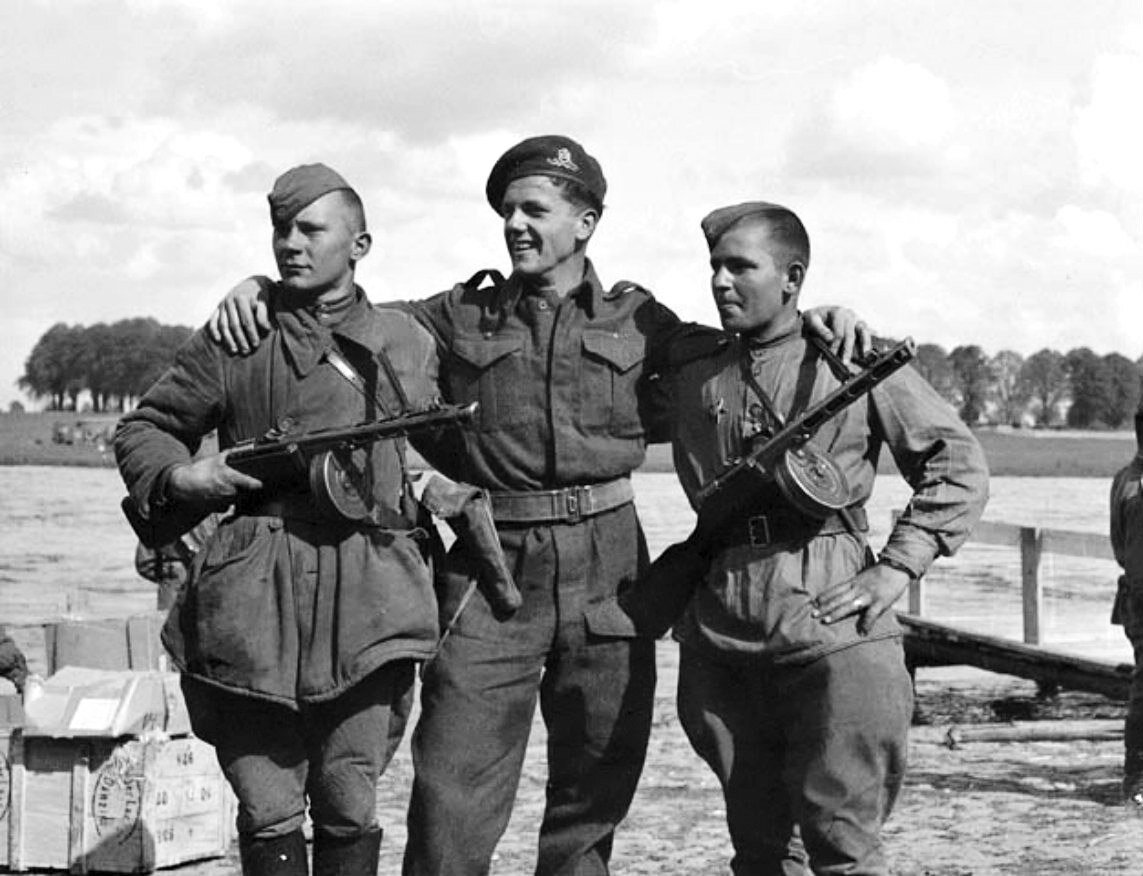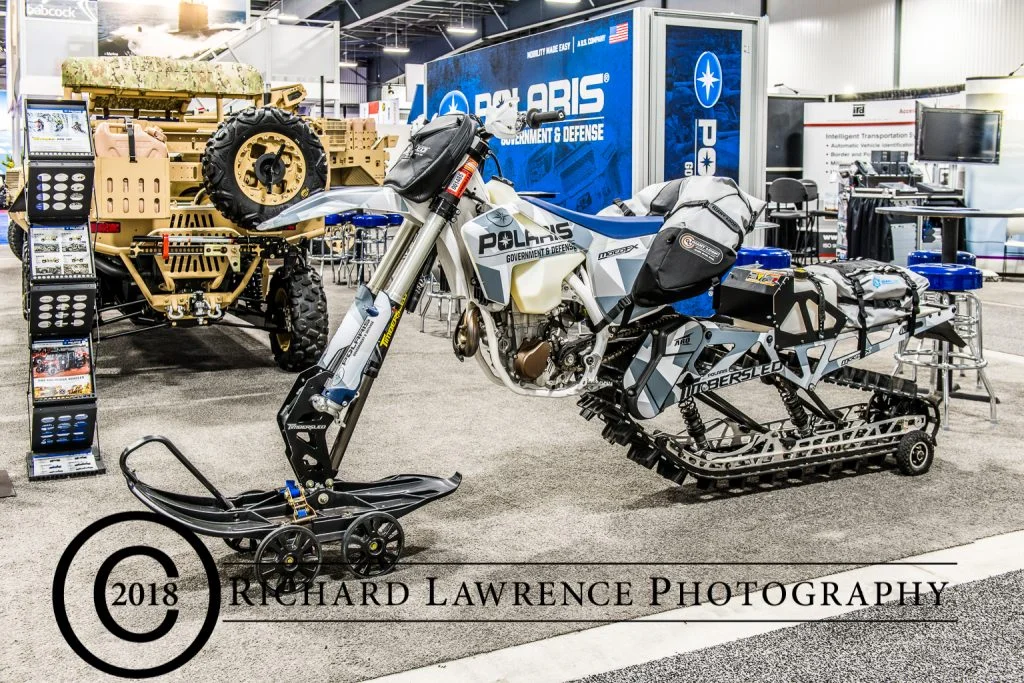by H.E. Ambassador Alexander Darchiev - Embassy of the Russian Federation in Canada
As Hitler’s lair in Berlin fell to the Red Army, and Nazi Germany unconditionally surrendered to the USSR and the Allied powers on the night of May 9th, 1945, the cruelest and deadliest war in the world’s history came to an end.
This year we celebrate the 75th anniversary of this glorious date by paying tribute to our fallen heroes, and to the many millions of victims tortured and exterminated by the Nazi death machine.
For the Soviet people it was the Great Patriotic War and the epic battle for survival. According to Hitler’s Generalplan Ost, the European part of the USSR should have been completely cleansed of Jews, Russians and other “non-Aryan” ethnicities labeled as subhumans to provide Lebensraum (living space) for eventual Germanization of this conquered territory.
By amassing a massive invasion force and mobilizing the military-industrial potential of conquered Europe, Nazis arrogantly put stakes on a surprise blitzkrieg assault upon the USSR in the early hours of Sunday, June 22, 1941. The scale of the attack by German and Axis powers’ forces was unprecedented as it erupted along a 2900-kilometer front with more than 4 million troops, 4,600 tanks, up to 5,000 aircraft and 50,000 artillery pieces.
Over a series of fierce battles, starting from the border - where Soviet defenders of the Brest fortress continued fighting for almost a month, even after the German frontline had pushed a hundred kilometers eastward – Germany’s self-confidence in its invincibility faded away. During the initial offensive, the Nazi forces failed to capture Leningrad and they were stopped on the outskirts of Moscow just 25 kilometres short of the Kremlin.
The whole world breathlessly waited for the outcome of the Moscow battle. Highly inspiring was the traditional November 7th, 1941 military parade on the Red Square which demonstrated to everyone that Russian capital remained unvanquished. Shortly after this the Red Army delivered a devastating blow to the previously undefeated Wehrmacht in a major counteroffensive which pushed the Germans back.
By the spring of 1942, the Germans changed their strategy and attempted to crush Soviet defenses by seizing the Caucasus and Caspian oilfields as well as cutting vital supply routes from the south to Moscow. Hitler took aim at Stalingrad, a key industrial and transportation center on the Volga river.
The battle of Stalingrad which lasted from August 23, 1942 to February 2, 1943, was the largest and bloodiest clash in the history of warfare, with an estimated 2 million total casualties on both sides. Together with almost 100 thousand German troops, 24 generals and their commander Field Marshal Paulus were taken prisoners. As a result, Hitler’s dreams to defeat the USSR miserably failed and the tide of war turned westward.
Amidst fierce fightings in summer 1942, as German tanks were rushing toward the Volga river, with the Soviet troops struggling hard to shore up their crumbling frontline, Canadian Prime Minister William Lyon Mackenzie King sent encouraging greetings on behalf of men and women of Canada to “the gallant peoples of the Soviet Union”. Stressing that “today our nations fight side by side”, Mackenzie King praised the “forcefulness and determination” of the Red Army “which have aroused the profound admiration of the civilized world”.
It was in this spirit of solidarity that the USSR and Canada established diplomatic relations on June 12, 1942.
Canada’s contribution to the war efforts of the anti-Hitler coalition was widely known and appreciated in the Soviet Union. The weekly magazine “British Ally” published in Russian by the UK Ministry of Information offered stories about Canadian operations, including the dramatic Dieppe raid in August 1942 (intended to test waters for a future landing in France) and the liberation of Sicily in August 1943.
A special praise and admiration has always been extended in Russia to the heroic Canadian sailors who braved the perilous Murmansk Run convoys to deliver weaponry and supplies in support of the USSR. These important missions from the sea ports of Saint John’s and Halifax to the Russian Artic harbours of Murmansk and Archangelsk took a heavy toll. Eighty-five Allied merchant vessels and 16 warships were lost to heavy German attacks. One particularly ill-fated convoy – PQ17 – lost 24 out of 35 ships at a cost of 153 lives.
Alex Polowin is one of those Canadian heroes. He joined the Navy in 1942 at the age of 17 and he currently resides in Ottawa. In 2013 Polowin was recognized for the noble service with the Russian medal which is named in honour of Admiral Fyodor Ushakov.
Mr. Polowin, whose name is now given to one of Ottawa’s streets said in an interview that “he’s fiercely proud of his contribution” to the war effort.
Another important Canadian input to the USSR’s war effort was the delivery of 1388 British designed Valentine infantry tanks which were assembled under licence in Montreal at the Angus railway shops. They took part, along with the famous Soviet T-34 tanks, in many of the Red Army operations, including the largest ever tank battle at the Kursk Bulge in July 1943. Kursk was the largest tank battle in history, and when the dust settled the Germans had suffered fatal defeat. From that point onward the Wehrmacht could only retreat.
By the end of 1943 the ground was literally burning under the feet of Nazi invaders. Around one million USSR citizens, young and old, men and women, who were located in the Nazi occupied territories were actively involved as partisans in a fierce underground struggle. This spirit of resistance and Red Army battlefield victories inspired prisoners of Nazi death camps and Jewish ghettos to revolt against the torturers and butchers of the Holocaust. Their anthem was the “Partisan song” which includes the lyrics “never say there is only death for you” penned by Girsh Glick, a young poet who escaped the Vilna ghetto and was later captured and executed by Germans. Most notable and the only successful uprising of its kind was the one at Sobibor concentration camp in 1943 which was led by the courageous Soviet officer Alexander Pechersky.
Symbolizing the courage and stamina of these defenders of the Motherland, their deep conviction that “ours is a righteous cause”, as proclaimed by Soviet Foreign Minister Vyacheslav Molotov in his radio address on June 22, 1941, was the heroic death of General Dmitry Karbyshev. Starting his service in the Russian Imperial Army, he was later promoted to the rank of Lieutenant General of the Corps of Engineers in the Red Army. His manuals on the theory of engineering, battlefield operations and tactics were mandatory reading for Soviet commanders.
Captured by the Nazis after being rendered unconscious in combat in August 1941, General Karbyshev was held in succession of concentration camps. He refused to collaborate with his captors and despite his advanced age, led the camp’s underground movement. On February 18, 1945 Germans executed him at the notorious Mauthausen death camp by dousing him with ice water and then leaving him to expire in the freezing cold. This inhuman murder was witnessed and later testified to by a Canadian Army Major Seddon de Saint-Clair who survived captivity at the same place and unfortunately died a year after his liberation in a UK hospital.
Starting in January 1944, ten strategic Soviet offensives along the huge frontline from the Arctic to the Black Sea drove the Nazi forces out of the USSR’s territory paving the way for the liberation of Eastern Europe. The Wehrmacht’s resounding defeat near Leningrad fully relieved that long besieged city’s barbaric blockade during which close to one million inhabitants died from shelling and hunger. The Nazis and their satellites were expelled from the Soviet Ukraine and the Baltic states, with Finland, then a German ally, exiting the war. The 1944 Soviet victory in Belarus wherein 28 of 34 German divisions were completely destroyed, allowed the Red Army to secure a bridgehead for the final strike on Berlin.
The Hitler regime found itself between a rock and a hard place, with the Western Allies having finally opened the long awaited second front in Europe when they landed on June 6, 1944 in Normandy. Once ashore, the allied expeditionary force pushed through France, Belgium, the Netherlands and started to advance towards the German Rhineland. Overcoming heavy German resistance, Soviet troops successfully forced the Nazis out of Romania, Poland, Yugoslavia, Hungary, Austria and Czechoslovakia.
After two weeks and two days of massive storming Berlin fell on May 2, 1945 to the Red Army.
Symbolically, on this very day the first direct contact between Russian soldiers and Canadian paratroopers from the 1st Canadian Parachute Battalion happened in the northern German city of Wismar. Several days earlier, on April 25, 1945, the historic encounter of Soviet and US troops occurred at the Elbe river marking the long-awaited link-up of the Allies' Eastern and Western fronts. Despite later biased interpretations influenced by the Cold War politics, these were the true and unforgettable moments of unity and happiness that the common deadly foe was finally vanquished.
Germans signed the instrument of unconditional surrender in Karlhorst, Berlin on May 9th, 1945 at the ceremony presided over by Soviet Marshal Georgy Zhukov in the presence of US, British and French generals. This date which is sacred and deeply meaningful for every Russian family has been celebrated ever since as Victory Day in Russia and most of the former USSR. Remarkably, Israel has also made it a national holiday expressing the gratitude of Shoah survivors and the Jewish people.
The Victory was won at an enormous price. The Soviet Union lost 27 million lives, of whom only one third were military losses, while millions of civilians became victims of mass brutal killings, bombardments and hunger both on occupied territories and in concentration camps.
Without the bravery and solidarity of the USSR and the Allied nations, Nazism would have never been destroyed. Echoing other world leaders, Prime Minister Mackenzie King congratulated Joseph Stalin on May 13, 1945 with the warm message stating that Canada will never forget “the tenacity and the heroism of the armies and the peoples of the
USSR”.
Let us remember well this important history lesson that global challenges can only be overcome by acting together putting aside political divisions, phobias and short-sighted ambitions. WWII experience should not fall victim to pro-Nazi revisionism or be thrown into oblivion. For the sake of peace and the well-being of future generations.
























































































































